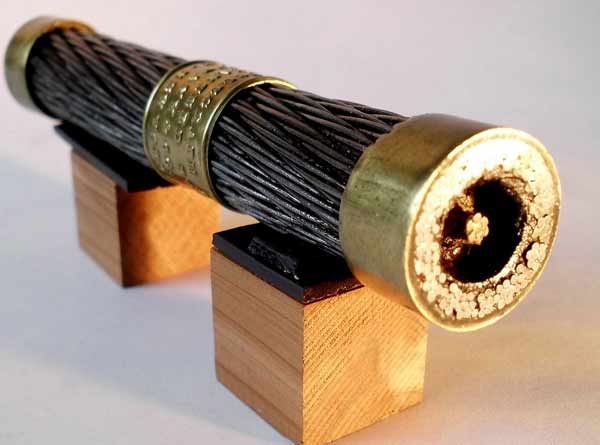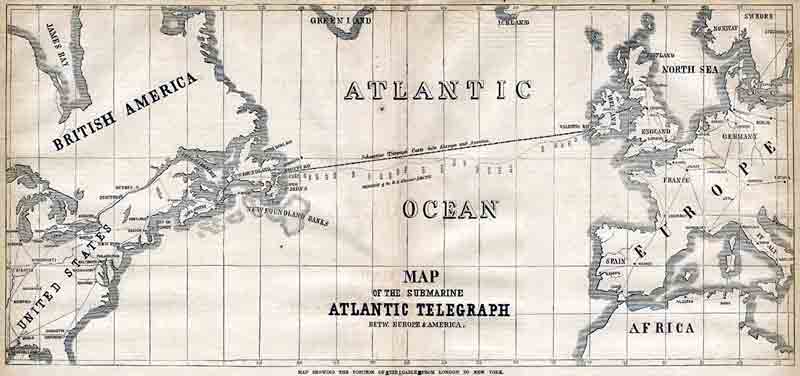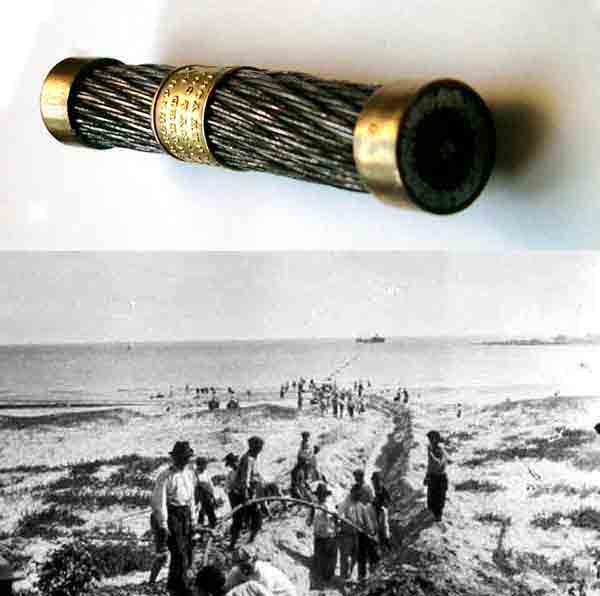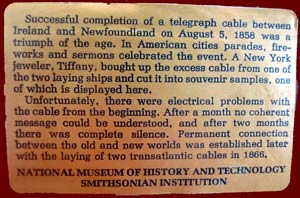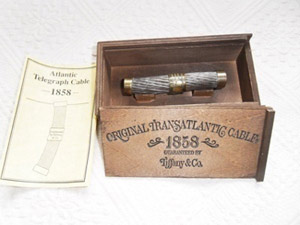THE QUEENīs MESSAGE
To the President of the United States, Washington
The Queen desires to congratulate the President upon the successful completion of this great international work,
in which the Queen has taken the greatest interest.
The Queen is convinced that the President will join with her in fervently hoping that the electric cable,
which now already connects Great Britain with the United States, will prove an additional link between the two nations,
whose friendship is founded upon their common interest and reciprocal esteem.
The Queen has much pleasure in thus directly communicating with the President, and in renewing to him her best wishes for the prosperity of the United States.
THE PRESIDENTīs REPLY
Washington City, August 16,1885.
The President of the United States to Her Majesty Victoria, Queen of Great Britain.
The President cordially reciprocates the congratulations of Her Majesty the Queen on the success of the great
international enterprise accomplished by the skill, science, and indomitable energy of the two countries.
It is a triumph more glorious, because far more useful to mankind than was ever won by a conqueror on the field of battle.
May the Atlantic Telegraph, under the blessing of heaven, prove to be a bond of perpetual peace and friendship between the kindred nations,
and an instrument destined by Divine Providence to diffuse religion, civilisation, liberty, and law throughout the world.
In this view will not all the nations of Christendom spontaneously unite in the declaration that it shall be for ever neutral,and
that its communication shall be held sacred in passing to the place of their destination, even in the midst of hostilities?
JAMES BUCHANAN


